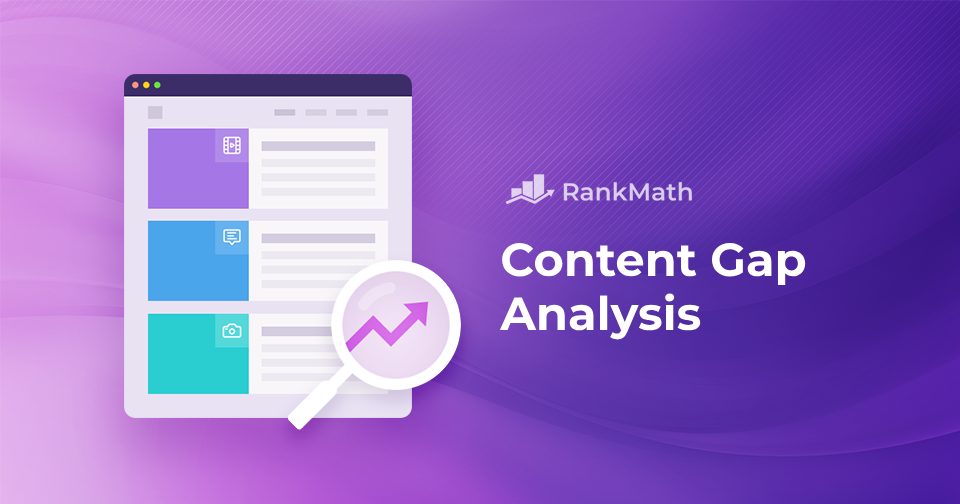Ever wondered why your content isn’t hitting the mark or achieving the desired results?
You’re not alone. The gap between content creation and audience engagement often feels challenging.
But what if there is a way to pinpoint those gaps and turn them into opportunities for growth and improvement?
Content gap analysis is a strategic approach to identifying inconsistencies between your current content offerings and your audience’s expectations and needs.
By asking the right questions and diving deep into the data, content gap analysis helps you to fine-tune your content strategy, maximize relevance, and ultimately drive better outcomes.
In this post, we’ll discuss everything you need to know about content gap analysis. So, without any further ado, let’s get started.
Table Of Contents
1 What is Content Gap Analysis?
Content gap analysis is the process of evaluating your existing content to identify areas where there is a lack of information or where current content does not fully address the needs and interests of your target audience.
This involves analyzing both your own content and that of your competitors to pinpoint missing topics, underutilized keywords, and opportunities for creating or improving content to better serve your audience and enhance your SEO performance.
Benefits of Content Gap Analysis
Conducting a content gap analysis offers several significant benefits that can impact your content strategy and overall marketing efforts.
It helps identify opportunities for new content. By systematically reviewing your existing content and comparing it with the interests and queries of your target audience, you can uncover topics that have yet to be addressed.
Additionally, a content gap analysis enables you to enhance your existing content. Often, you may find articles that are outdated or lack depth. Updating these with current information, adding new insights, or adding multimedia elements like videos and infographics can significantly boost their performance.
Improving SEO and search rankings is another important benefit of content gap analysis. By identifying keywords that are relevant to your audience but not currently targeted in your content, you can create or optimize content around these terms.
Perhaps the most important benefit of content gap analysis is meeting audience needs more effectively. Understanding what your audience is looking for and ensuring that your content addresses these needs helps build a loyal and engaged user base.
This customer-centric approach not only improves user satisfaction but also enhances your brand’s credibility and authority.
2 Types of Content Gaps
Identifying and understanding different types of content gaps is important for creating a comprehensive and effective content strategy. Let’s discuss the different types of content gaps.
2.1 Topic Gaps
Topic gaps occur when your content doesn’t cover important topics or subjects your audience is interested in.
For instance, if you run a technology blog but haven’t written about emerging trends like artificial intelligence, you’re missing out on a key interest area for your audience.
Addressing topic gaps involves researching your audience’s interests and competitors’ content to identify new subjects to cover.

2.2 Keyword Gaps
Keyword gaps are present when relevant keywords your audience is searching for aren’t targeted by your content.
This can lead to missed opportunities in search engine rankings and organic traffic.
Conducting keyword research using tools like Ahrefs or Semrush can help you discover these gaps and optimize your content to include these keywords, thus improving your SEO performance.

Refer to our dedicated tutorial on keyword research to identify keyword gaps for your content.
2.3 Format Gaps
Different audiences prefer consuming content in various formats, such as articles, videos, infographics, podcasts, or interactive content.
Format gaps occur when your content is not available in the formats that your audience prefers.
For example, if your audience enjoys video tutorials but your site only offers written articles, creating video content can help fill this gap and better engage your audience.
2.4 Quality Gaps
Quality gaps arise when your content does not meet the high standards expected by your audience. This can be due to outdated information, lack of depth, poor writing, or insufficient visuals.
Addressing quality gaps involves enhancing your content to be more comprehensive, accurate, and engaging. Regularly updating and improving existing content can help maintain its relevance and value.
2.5 Funnel Gaps
Content funnel gaps exist when insufficient content caters to different stages of the buyer’s journey—awareness, consideration, and decision.
For instance, if you have plenty of content to attract new visitors (awareness stage) but little to help them make a purchase decision (decision stage), you have a funnel gap.
Creating content according to each stage can help guide visitors through the funnel more effectively.
Refer to our dedicated tutorial on the buyer’s journey and create content at each stage of the buyer’s journey.
3 How to Perform Content Gap Analysis
You can use Google Search Console to perform content gap analysis.
To do so, navigate to the Performance section in the left-hand menu, as shown below. This report provides data on how your site performs in Google Search, including metrics such as total clicks, total impressions, average CTR (click-through rate), and average position.
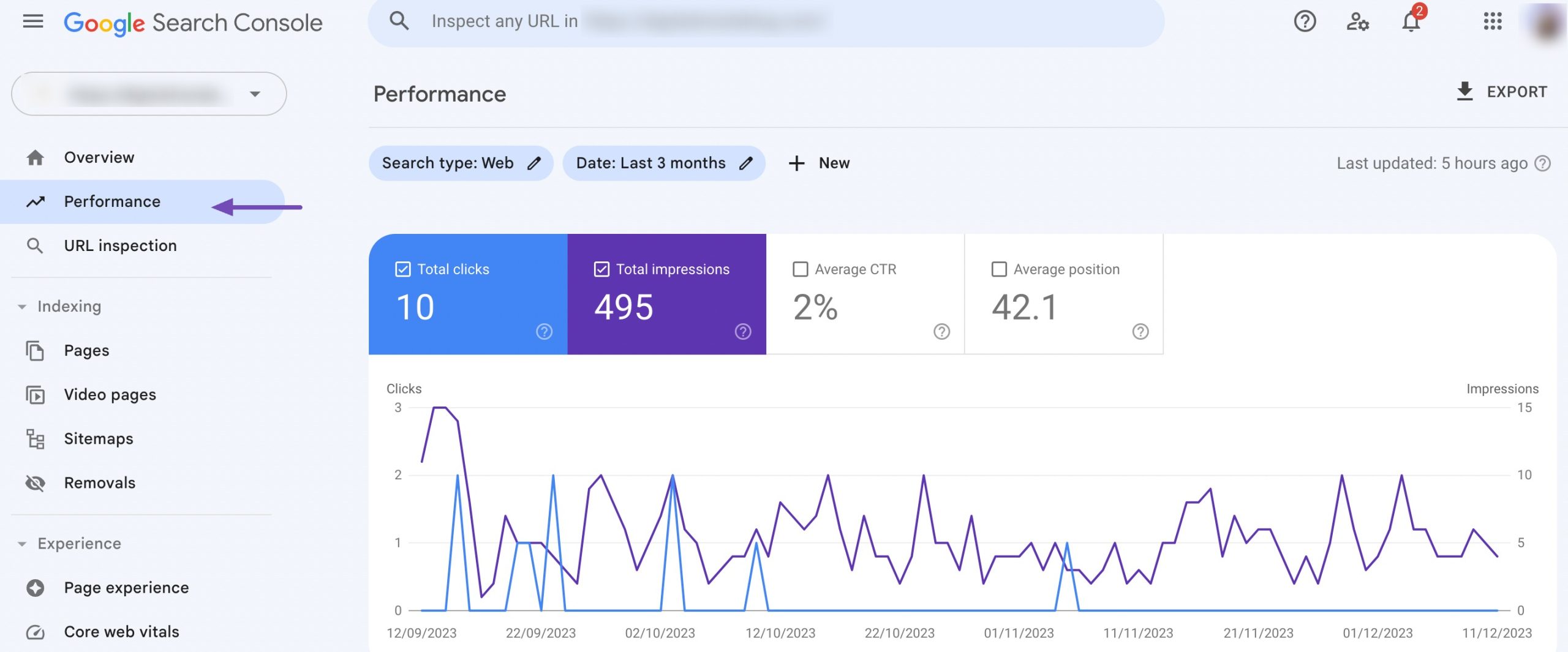
In the Performance report, you will see a list of search queries that your audience use to find the content on your site.
Look for queries with high impressions but low clicks, as these indicate that your site is appearing in search results but audiences are not clicking on your links.

This can signal a content gap where your page titles or meta descriptions might not be compelling enough, or the content doesn’t match user intent.
Navigate to the Pages tab in the Performance report. Here, you can see which pages receive the most clicks and impressions.
Compare these pages with the list of queries to identify if there are important queries that are not leading to significant traffic on any of your pages. This is called secondary search intent, which we’ve discussed below in detail. This can highlight content gaps where additional content or improvements are needed.

Understanding secondary search intent allows you to optimize your content more effectively, ensuring it aligns with what your audiences are searching for.
Start by navigating to the search results and selecting the Queries tab. Then, add an additional attribute by choosing the Page filter.
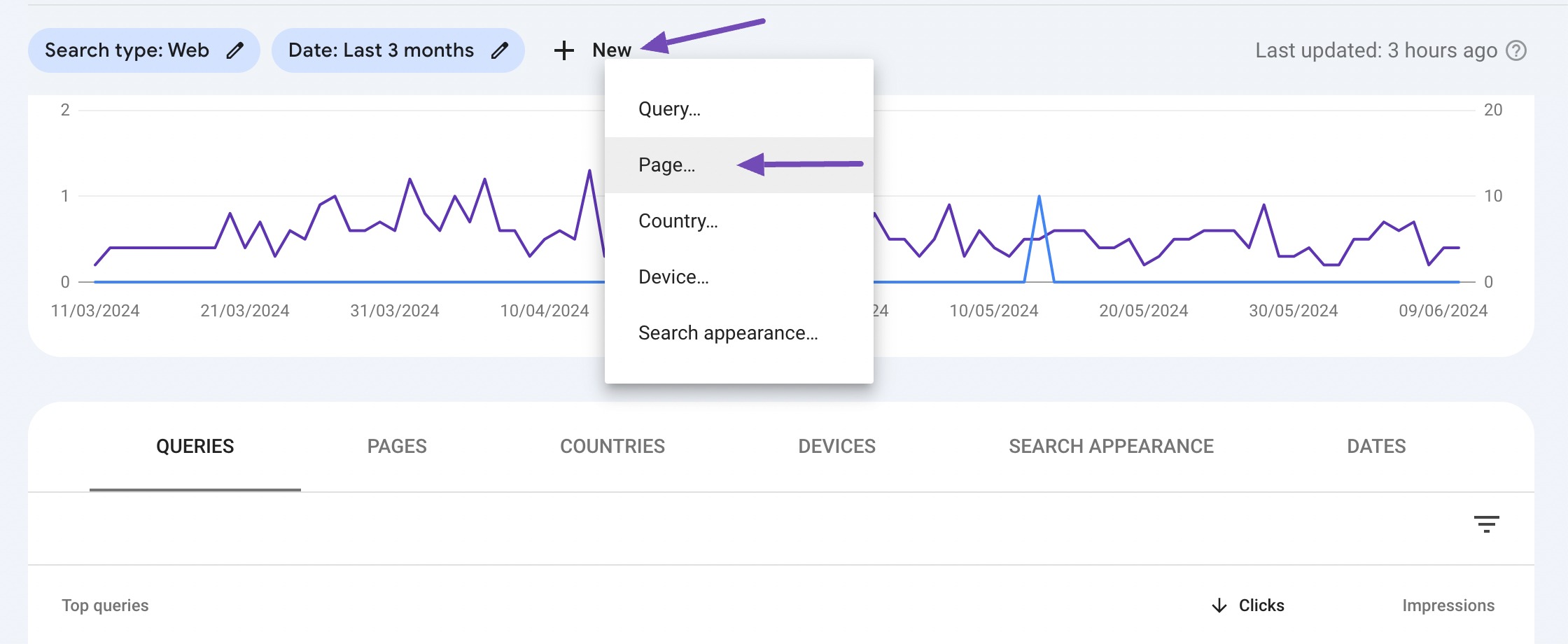
Next, select either URLs containing or Exact URL to filter the data. Enter the URL of the article you’re updating, focusing on your main keyword.
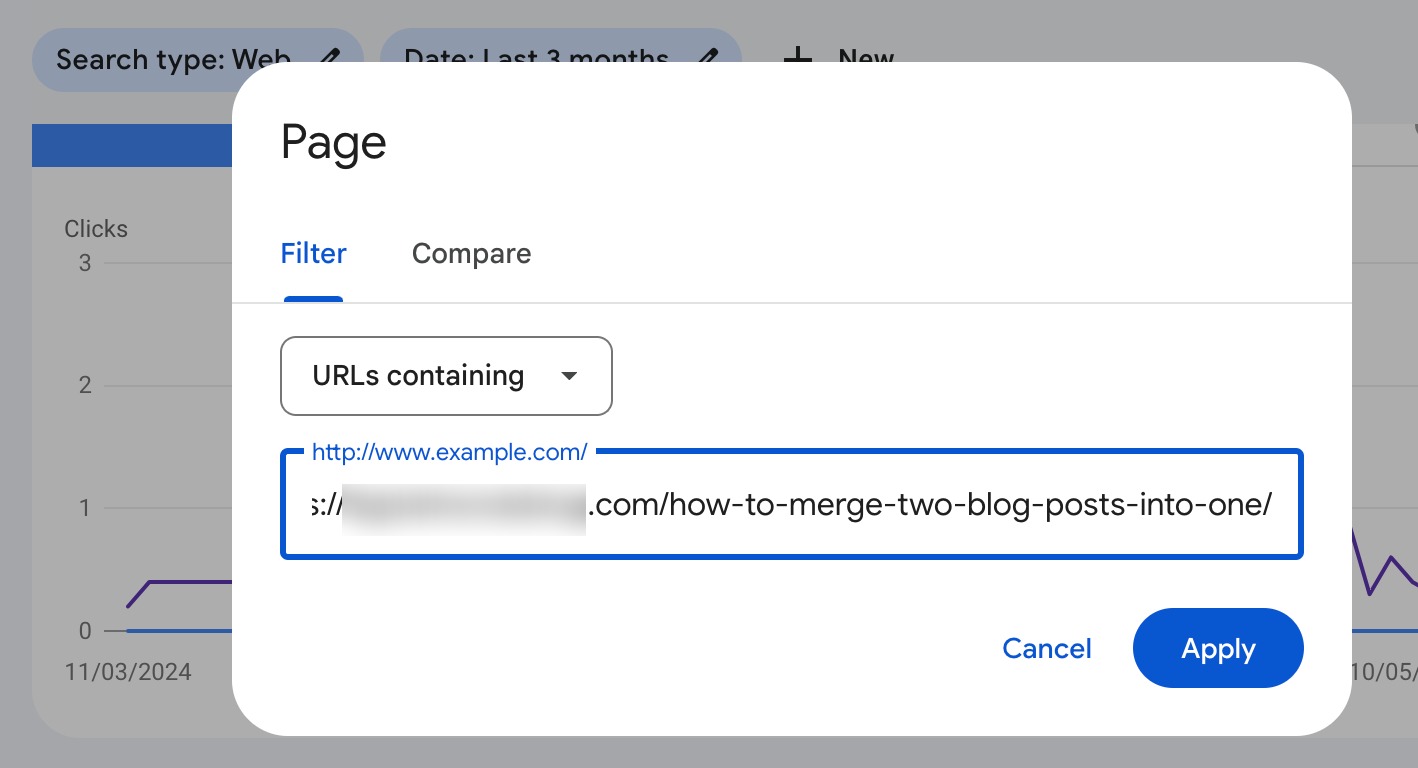
This will generate a list of keywords for which the article is ranking. While these keywords may not be driving many clicks, you’ll be able to see the impressions they’re generating. These indicate areas where you can expand your content.
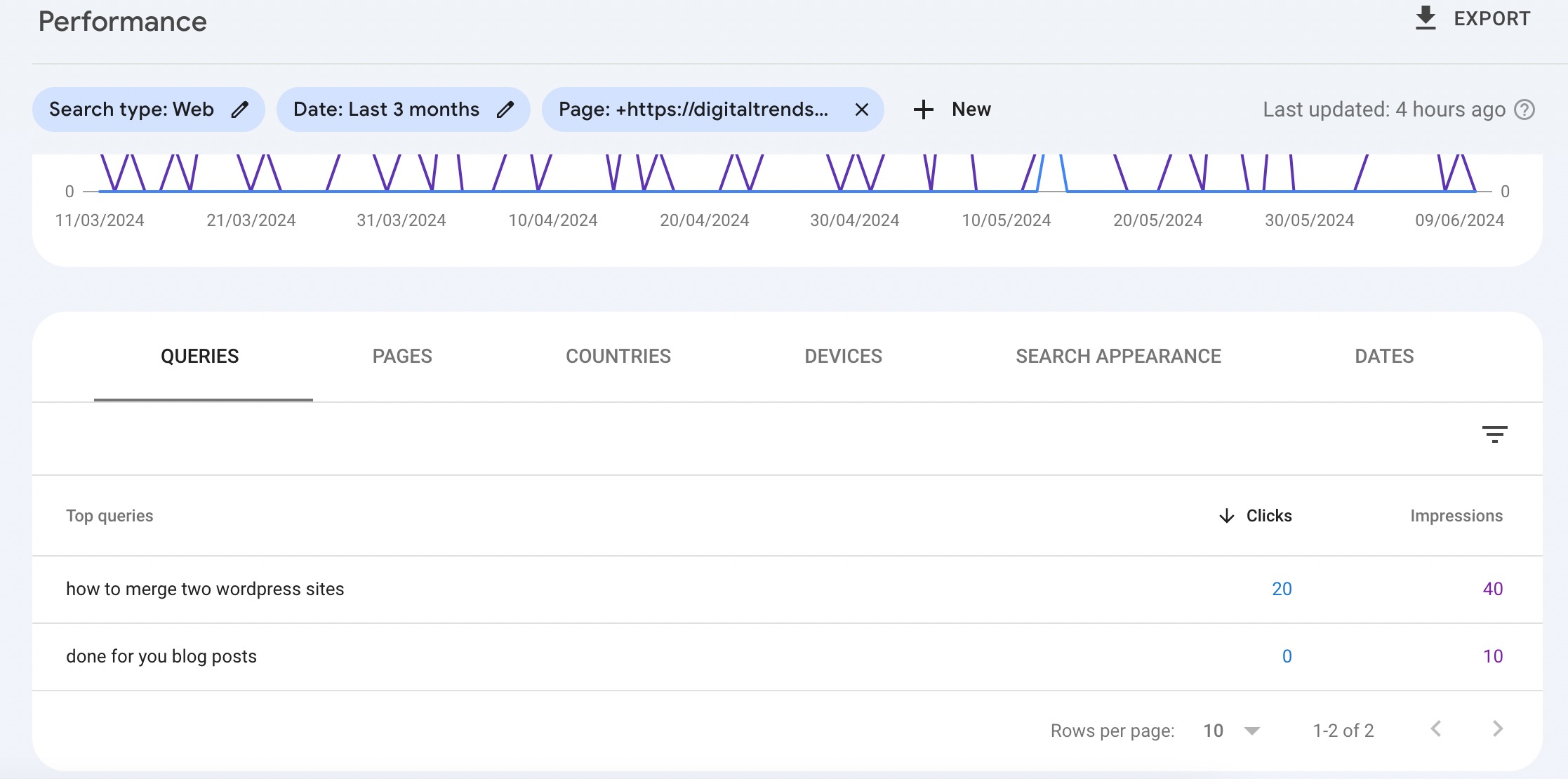
You can then do a competitor analysis and identify gaps with competitor content using tools like Ahrefs or Semrush.
Analyze the format, depth, and quality of your competitors’ content to identify what they are doing that you might not be.
Based on the insights from your analysis, create new content to fill the identified gaps or optimize existing content to better match user intent.
Regularly monitor your Google Search Performance data to see how your new or updated content performs. Continuous analysis helps identify new gaps as they emerge and refine your content strategy accordingly.
4 Create and Optimize Content
One of the first steps is creating engaging headlines. A compelling headline captures attention and helps readers to click through and engage with your content.

During a content gap analysis, identify areas where your current headlines may not perform well and experiment with more impactful titles that incorporate relevant keywords while maintaining a natural flow.
Writing high-quality, valuable content is important. This means producing content that is informative, well-researched, and developed to meet the needs and interests of your audience.

You can use Content AI to create high-quality content that meets your audience’s needs.
Through content gap analysis, you can identify where your existing content falls short in providing actionable insights or solving problems for your audience. Enhancing these pieces ensures they’re more comprehensive, error-free, and easy to read, which increases their value and relevance.
A key part of the analysis is naturally including keywords in your content. Identify gaps where important keywords are missing or underutilized in your existing content.
Ensure these keywords are integrated into the text, enhancing the content’s relevance without disrupting readability. Avoid keyword stuffing and instead focus on naturally fitting primary and secondary keywords within the context.

Optimizing for SEO involves addressing both on-page and technical SEO techniques. As part of your content gap analysis, review your current content for effective meta descriptions, alt tags for images, and internal linking strategies.
These on-page SEO elements help search engines better understand and rank your content. Additionally, check for technical SEO considerations like site speed, mobile optimization, and secure connections (HTTPS). These factors are essential for improving search performance and user experience.
5 Frequently Asked Questions
How do I start a content gap analysis?
Begin by reviewing your existing content, analyzing your audience’s search behavior using tools like Google Search Console, and comparing your content with competitors. Identify areas where your content is lacking in depth, or relevance.
How often should I conduct a content gap analysis?
It’s recommended to conduct a content gap analysis at least twice a year. However, more frequent analyses may be beneficial in rapidly changing industries and competitive markets.
How can content gap analysis improve SEO?
By identifying and filling content gaps, you can target more relevant keywords, improve content quality, and enhance user engagement. This leads to better search engine rankings and increased organic traffic.
How do I prioritize content opportunities?
Prioritize content opportunities based on their potential impact and the effort required. Focus on high-impact, low-effort tasks first to quickly improve your content strategy and achieve significant results.
How do I measure the success of my content gap analysis?
Measure success by tracking key performance indicators (KPIs) such as organic traffic, search rankings, engagement metrics (e.g., time on page, bounce rate), and conversion rates before and after implementing changes.
6 Conclusion
Conducting a content gap analysis is an essential practice for any business seeking to optimize its content strategy and enhance its presence.
By identifying gaps in your content, you can align your offerings more closely with the interests and needs of your audience. This not only involves creating high-quality, relevant content but also optimizing for SEO and utilizing diverse formats to maximize engagement.
Content gap analysis is a continuous process that supports ongoing improvement and innovation in your content marketing efforts.
By making data-driven decisions and staying informed to your audience’s needs, you can develop a dynamic content strategy that ensures long-term success and sustained growth.
If you like this post, let us know by Tweeting @rankmathseo.
